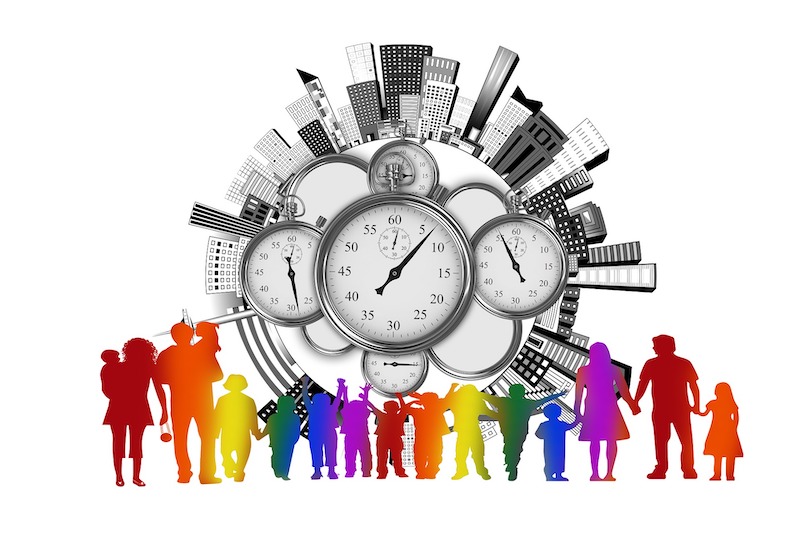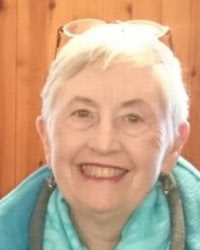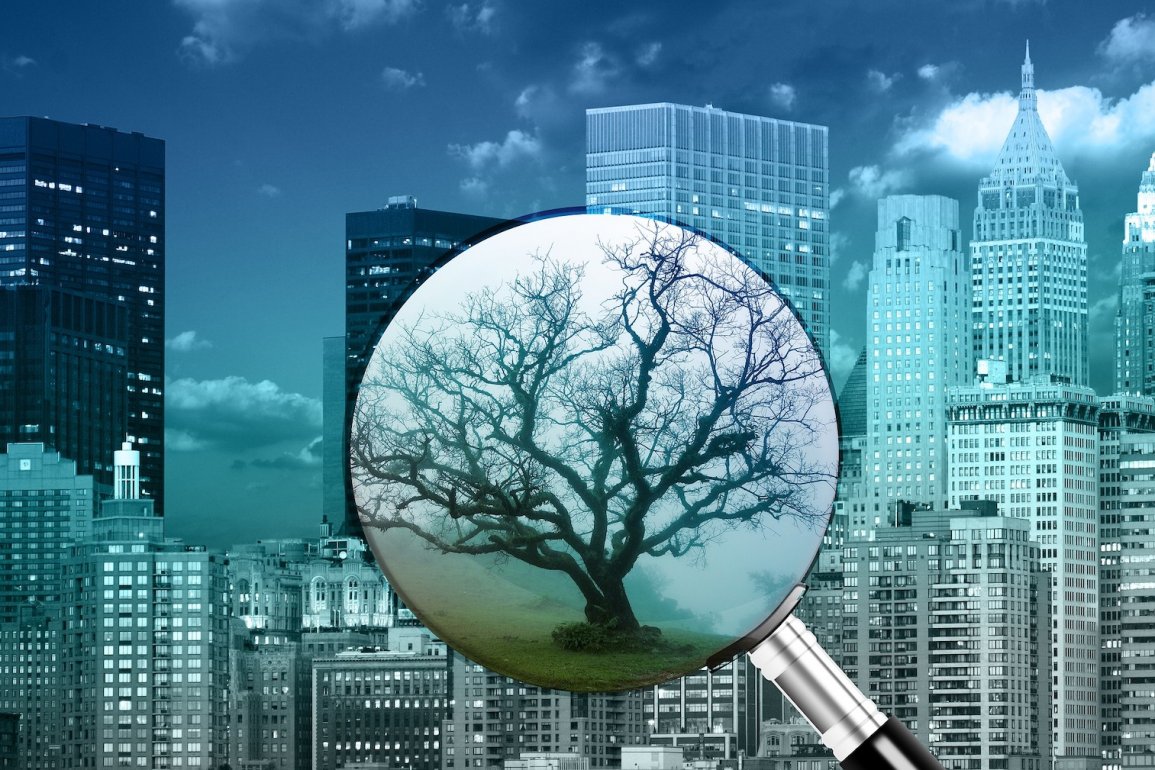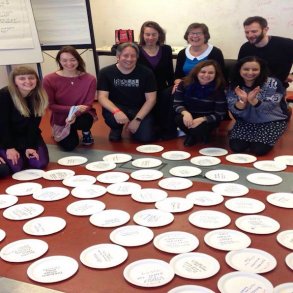By Marilyn Hamilton for Enlivening Edge Magazine
In my descriptions of cities as living systems, it’s clear that the wellbeing of the city depends on the wellbeing of its organizations and its citizens. Moreover, the development and evolution of the city into something approaching an Integral/Teal City, depends on the development and evolution of Integral/Teal organizations who in turn depend on the development and evolution of Integral/Teal individuals.
Thus, organizational developers themselves are dependent on an ecology of colleagues who work with individuals to develop their capacities. They are also dependent on cross-sectoral colleagues who work in the public, private and NFP sectors to develop other organizations—all connected in the web of life.
What makes a system a “living” system?
According to Miller (1) the same three major systems and nineteen sub-systems are fractal patterns shared across all living systems.
These perform functions to metabolize:
- Energy/Matter/information
- Energy/Matter
- Information
According to Capra (2) living systems demonstrate three patterns:
- They survive (sustaining themselves as entities fulfilling distinctive purposes).
- They reproduce or regenerate (enabling resiliency, learning and development).
- They connect with their environment (adapting and co-creating their contexts).
Organizations are part of the living system of a city
When I have been reframing cities as living systems, I have appreciated the fractalness of these core systems and life-giving patterns. Together they enable vitality across scales in the city to resonate, cohere and emerge greater capacity (e.g. moving us in the direction of Teal consciousness and functioning).
 Within cities, these systems and patterns are demonstrated by individuals, families and organizations. Together they act like cells, organelles, organ systems and a super-organism. These different scales show up in Integral City Map 2 and Map 3 (which we discussed in the previous article).
Within cities, these systems and patterns are demonstrated by individuals, families and organizations. Together they act like cells, organelles, organ systems and a super-organism. These different scales show up in Integral City Map 2 and Map 3 (which we discussed in the previous article).
As organizational developers, we have a natural focus on the health and wellbeing of the organizations in the city. An organizational developer with a “Teal” or “integral” view of organizations naturally considers the qualities of organizations that Laloux described in Reinventing Organizations. (3)
Organizations are living systems for individuals
This reinvention is a powerful reframe for organizations that depends on development in several directions—the first in the “down” scale direction of the individuals who work in the organization. The individuals/cells of the organelles/organizations must be healthy and organized in such a way that the wellbeing of the cell serves the wellbeing of the organelle and vice versa.
In other words, the organization must care for the wellbeing of the individuals who serve its health. And individuals must be willing to serve the purpose, vision, values and goals of the organization so the organization can realize its capacity as a living system. It is a two-way exchange of energy, matter, and information.
Organizations are living systems within a multi-system environment
The other direction for organization developers to be aware of is the “up” direction to see itself as part of an “organ system” that influences the city. The primary one that most developers consider is the economic sector to which the organization belongs. This awareness impacts understandings about serving clients, competing for resources, growth, sustainability and resilience.
 But organizations always exist in a multi-system environment (aka the economy) where being aware and supporting the conditions that enable other organ systems to be healthy is critical to thriving.
But organizations always exist in a multi-system environment (aka the economy) where being aware and supporting the conditions that enable other organ systems to be healthy is critical to thriving.
If we think of the fractal pattern of the body—we know that the skeletal system, depends on the vascular system, metabolic system, neural system and waste management systems for survival. Likewise, organizations in the city are serving the city system as its vital organs.
Complexity, change, and the tipping point
Moreover, our awareness of living systems needs to be paired with awareness, knowledge and practise of complexity. Without complexity-intelligence we might feel that our impulse to change (develop/evolve) is just too overwhelming to actually accomplish.
Evolution of large cities to another level of complexity involves hundreds of thousands or millions of people, as well as thousands of organizations. But the science of complexity gives us the valuable insight that
in order to change a whole system, the critical shift-point is when somewhere between 10% and 15% of the system changes; then the rest of the system will follow.
This leads me to believe that
organizational developers are critical catalysts to enliven the city.
They are influencing key organizations to advance their capacities which in turn influences their workers’ capacities (and by association the families of their workers) as well as city contexts/environments.
Thus, as I am facilitating change (e.g., changing behaviours to address climate change) or meeting organizational developers who attend Integral City trainings, or where I speak at city conferences, I am seeking colleagues who are impacting cities in such a way that a deeper level of complexity is becoming visible.
I am also looking for evidence that a critical mass of organizational and individual change is producing systems, relationships, and behaviours that indicate we are approaching a 10% population shift in a demonstrated increase in Teal behaviours. The role that organizational developers are playing in supporting change in organizations will not only enliven those organizations; it will change the whole city.
So, lead me to the enlivening edges of organizational development and change in cities or regions that show change is starting to happen. Facilitating this enlivening in the edges is where we—a community of organizational and city change agents—can best catalyze systemic change.
In other words, if we have any interest in serving the evolution of the city scale of human systems, organizational developers have the opportunity to influence change at a critical leverage point—the enlivening edge of a critical mass of organizations serving city wellbeing.
And just as the individual/cell and organization/organelle have a reciprocal relationship the organization/organelle and city/superorganism can enjoy a similar positive potential.
Note from Enlivening Edge Magazine
EE is happy to be an affiliate partner of Integral City which is offering these three sequential courses at Findhorn International Centre for Sustainability, Scotland, this year. If you register, please support Enlivening Edge by using this special registration code: EEIC19.
Beyond Smart: Integral City Practices Tools & Maps April 27-28
Beyond Resilient: Integral City Inquiry, Action & Impact April 30-May 3
Beyond Complexity: Integral City Care Context & Capacity Sept. 14-17
References
(1) Miller, J. G. (1978). Living Systems. New York: McGraw-Hill Book Company.
(2) Capra, F. (1996). The Web of Life: A New Scientific Understanding of Living Systems. New York: Anchor Books, Doubleday.
(3) Laloux, F. (2014). Reinventing Organizations. Retrieved from http://www.reinventingorganizations.com/purchase.html.
Gladwell, M. (2002). The Tipping Point: How Little Things Can Make a Big Difference. New York: Back Bay Books.
Hamilton, M. (1999). The Berkana Community of Conversations: A Study of Leadership Skill Development and Organizational Leadership Practices in a Self-Organizing Online Microworld. (PhD doctoral dissertation), Columbia Pacific University, Novato, California.
Hamilton, M. (2000). How Building a Leadership Organization Prepares the Way for Learning. In T. Anderson (Ed.), Every Officer is a Leader: Transforming Leadership in Police, Justice, and Public Safety. Boca Raton: St. Lucie Press.
Hamilton, M. (2008). Integral City: Evolutionary Intelligences for the Human Hive. Gabriola Island BC: New Society Publishers.
Hamilton, M. (2017). Integral City Inquiry and Action: Designing Impact for the Human Hive. Phoenix, AZ: Integral Publishers.
 Marilyn Hamilton, PhD, is a city (or Human Hive) evolutionist, futurist, PRAQtivist, author
Marilyn Hamilton, PhD, is a city (or Human Hive) evolutionist, futurist, PRAQtivist, author
and researcher. She reframes complex challenges designing inquiry, action and impact as integral, evolutionary and living systems. Through care for self, others, place and planet she believes cities can become “Gaia’s Reflective Organs”. [email protected].




